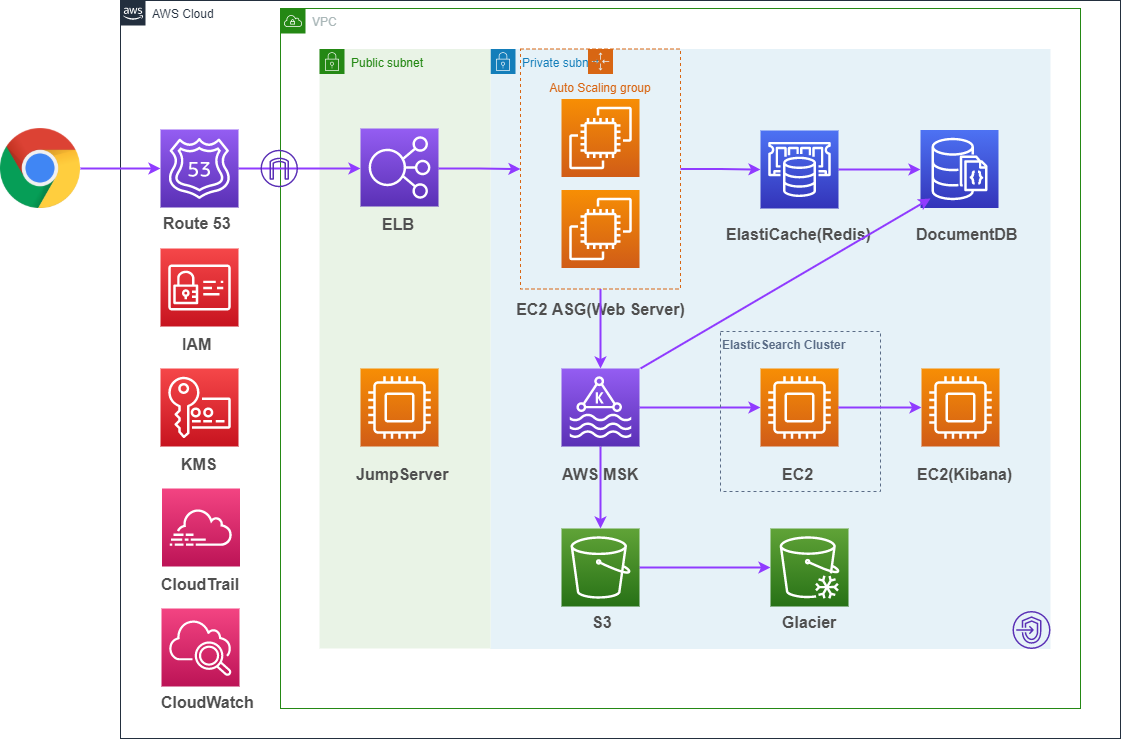1) AWS Route53 hosts the website domain name. When end users access the domain name through computers, tablets, phones, etc., the traffic is directed to the AWS ELB load balancer.
2) The web backend servers are composed of an EC2 Auto Scaling group spanning multiple availability zones to receive and process ELB traffic. DocumentDB stores customer orders, product inventory, product reviews, shopping carts, etc. An ElastiCache cluster is placed in front to accelerate read/write operations for the web servers.
3) The Web Servers also send end user real-time behavior data (e.g. ad clicks, browsed products), device info, and orders to AWS MSK. Orders are batched and written to DocumentDB when reaching 20,000. Kibana visualizes real-time customer ad click behavior to help quickly adjust business strategies, especially during online promotions.
4) Customer behavior data, device info, etc. are saved to S3 via MSK for future big data analytics using EMR.
5) S3 access frequency monitoring and lifecycle policies are enabled to tier data, transitioning cold data to Glacier.
6) AWS MSK, EBS storage use KMS encryption. S3 static data uses server-side SSE-S3 encryption.

About Huwei Technology’s Requirements and Challenges:
As the business grew, outbound bandwidth and network performance gradually became architectural bottlenecks, while operational pressure increased sharply. Additionally, to improve application performance, the customer wanted to introduce Redis database caching, but the company lacked development and operations personnel with relevant skills.
Migration Solution and Results:
The operational pressure was relieved. After migration and optimizing the purchasing plan, the cost of operating this system was reduced by 47.4%.
